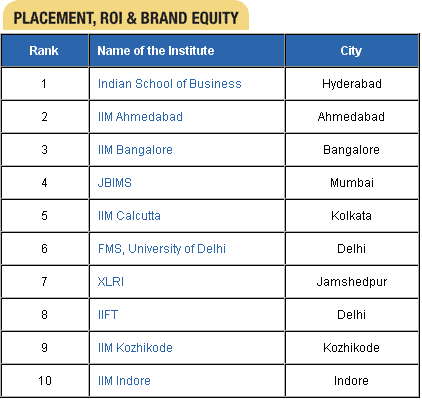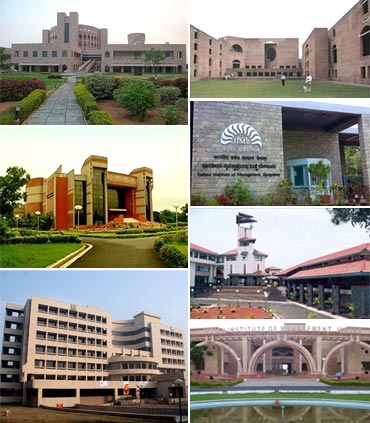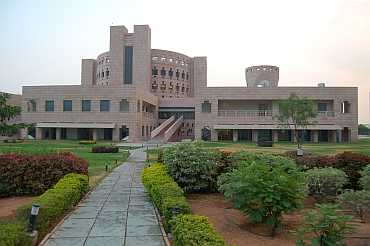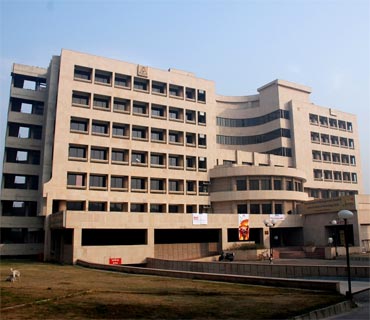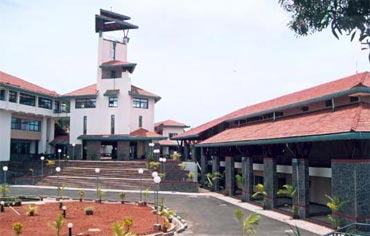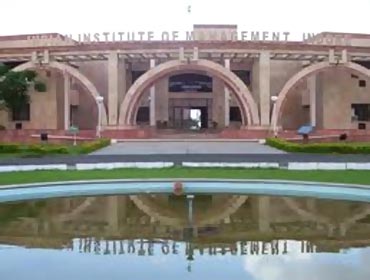 | « Back to article | Print this article |
Top B-Schools based on 7 parameters
The in-depth ranking consists of 7 parameters which were used to help students choose thier college wisely. These 7 parameters include: Student Quality, Faculty Quality, Facilities + Academic Assistance, Pedagogy & Recognition, Research Output, Executive Training, Placement, ROI & Brand Equity.
Student Quality
Most of the learning in B-Schools is acutely dependent on the quality of peers. This rank is a composite index of student diversity in terms of gender, educational background and geographic spread, work experience (over two years) as well as percentile cut-off for admissions.
Faculty Quality
Your mentor and friend for two years are the institute's faculty members who help shape your views, and equip you with skill sets that are crucial for your career's future. This rank comprising faculty members' industry experience, educational qualification, and international exposure shall apprise the student of the quality of the faculty they would engage with.
Facilities+ Academic Assistance
An MBA also means an endless list of projects, group activities, field trips, late night sessions and case analyses. A fully integrated residential campus and presence of senior research scholars helps a lot. This indicator captures the presence of both as well as the core faculty to student ratio in the campus.
Pedagogy & Recognition
A measure of the academic processes, these rankings help you understand how robust the school's quality of teaching is. But beware, teaching is a very personal process, and no documentation can effectively capture the same. But the ranking does help to identify the good ones.
Placements, ROI & Brand Equity
This is the most important rank and the first entry point for the student. A purposive amalgam of average and lowest packages, ROI and brand equity of the school, this index provides you an indicator of the value the school has in the eyes of all stakeholders.
Top B-Schools based on 7 parameters
Student Quality
We measured student quality using three criteria:
a) 'Student Diversity' which itself includes Academic Diversity, Educational Background Diversity and Geographic Diversity in equal weights.
b) 'Work Experience' where we have given weightage to students having more than 2 years of work experience and
c) 'Percentile Cut-off' is the best available objective parameter for gauging the students' intellectual capability
ISB, with its unique batch profile - a high composition of professionals with significant work experience as well as a healthier gender ratio (7:3), is in a different league from the other top-notch B-Schools. It is followed by IIM, Lucknow where more than 50% of the students have work experience of more than 2 years and IIM Calcutta which has 44% of such students. TISS also fares well here due to its 44% work-ex students and a healthy gender ratio. IRMA jumps 21 ranks from its overall ranking due to its high percentile cut-off.
In contrast the top-ranked IIM Ahmedabad has just one-fourth of their batch with similar work-experience and IIM-Calcutta plummets 11 ranks due to the same reason - less than one-fifth of its batch has significant work-ex.
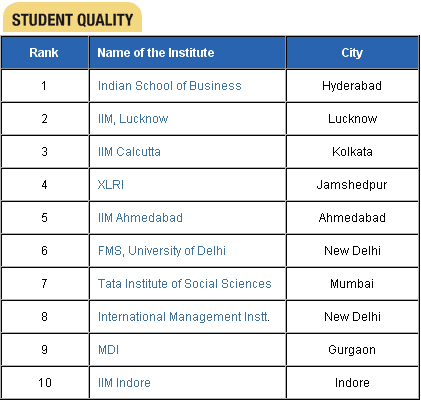
Top B-Schools based on 7 parameters
Faculty Quality
Faculty, the foundation stone of any institute, have been evaluated here on the basis of their qualifications (PhD), industry exposure, and international tenure. While PhD helps bring a greater academic depth, industry exposure helps to balance the same with the actual practice of management, definitely an applied science. International tenure brings in the required exposure to global practices and knowledge.
Though most institutions live up to their ranks there are some significant gainers. IIT-Kharagpur steams ahead 11 notches powered by an impressive team of 100% PhD faculty with more than one-fourth of them having international tenure. MICA is another institute which boasts of eight faculties having international tenure. While KIIT School of Rural Management breaks into the top 20 here thanks to nearly 70% of its faculty having good industry experience, FMS takes a beating due to scoring only 21% on the same parameter. Great Lakes is another institute which deserves mention here due to its 78% PhD faculty with 10 of them having international tenure.
Significant losers in this list include XLRI (16 ranks), IIFT (16 ranks) & FMS (13 ranks). While XLRI loses because of 22% non-PhD faculty which is not commensurate with the top-league standards, IIFT falls here due to both 34% non-PhD faculty as well as total lack of any faculty with international tenure.

Top B-Schools based on 7 parameters
Facilities + Academic Assistance
We have clubbed together residential facilities (for both students as well as faculty) with Student-Faculty ratio and PhD scholars on campus to help gauge if the B-School provides the students ample opportunity to interact and learn from faculty and PhD scholars, which we feel should definitely extend beyond the classroom.
IRMA moves up 27 notches here due to an excellent student-to-faculty ratio of 11 and 100% residential facilities. With an astounding 167 faculty members, the new Lovely Professional University marches into the top 20. AICTE stipulated 1:15 faculty: student ratio and decent residential facilities is all it took another new entrant to get into the ranking sweepstakes.
The biggest hit-takers in this ranking are the ones lacking good residential facilities/campus atmosphere typified by FMS (lost 61 positions), & JBIMS. However, what really causes JBIMS to plummet by 87 ranks here is the absurd core faculty-student ratio of 1:288. NMIMS also took a beating of 47 positions due to comparatively weak faculty-student ratio and residential facilities.
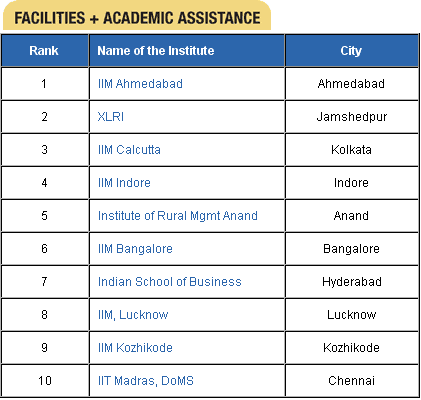
Top B-Schools based on 7 parameters
Pedagogy & Recognition
An amalgam of scores in Accreditation, Teaching Process, Student Co-curricular activities & Academic Diversity, the rank helps you place a school in terms of its academic value it might provide you. Accreditation by agencies like AMBA, EQUIS, SAQS, NBA, NAAC as well as an ISO certification have been given credit under 'Accreditation' whereas factors like number of electives and richness of the library have helped us understand academic diversity and teaching process. Co-curricular activities like event management give the students a real chance to test their management skills and add to campus vibrancy.
IBS-Hyderabad climbs up to the 2nd rank with NAAC & SAQS accreditation as well as 100+ electives on offer. LIBA also gains significantly here due to the wide array of elective choices it offers. Incidentally housed in the same campus, both SCMHRD and SCIT of the Symbiosis stable gain significantly here due to NAAC "A" grade accreditation.
IIM Indore and IIM Kozhikode lose out due to lack of any accreditation, lesser number of electives (49 & 48 respectively) and also weaker libraries than the other peers in their league. A weak elective range (just 36 electives) also hits IIFT hard despite a NAAC grade "A" accreditation.
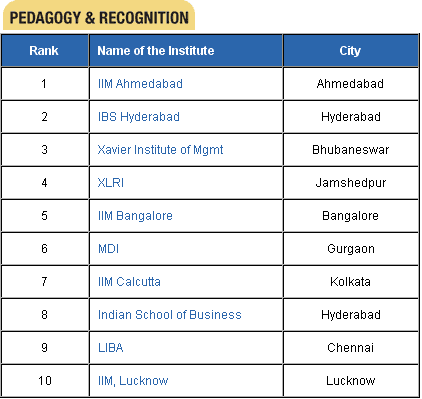
Top B-Schools based on 7 parameters
Research Output
An institute's international standing and respect primarily emerges out of this parameter. And this is the most neglected aspect of a B-School. Barring the top 25 schools rest of them go through the motions of setting up a publication record. We had to leave out half the submissions, since they were basically in-house journals and newsletters that masquerade as refereed publications. Primarily research output has been categorised into reputed national and international publications from the faculty members in an institute.
Apart from the IIMs and good institutes like MDI, IBS, Hyderabad and Welingkar, it is the IITs which despite a smaller faculty size, are seen to excel in publications. Emerging private B-Schools in this category are TAPMI, Manipal, Jaipuria Lucknow and Maharishi Markandeshwar Institute of Management. International publications are produced the most by MDI and IIM Ahmedabad while IBS Hyderabad dominated the domestic front.
Publications in management and related disciplines are still very low in India as compared to the US and some European countries. This is attested by the fact the total number of annual domestic and international publication records of 113 plus B-Schools that participated in our survey added up to 1675 in all. And nearly 47% of institutes reported a figure that was almost always in a single digit. India has a long way to go to crack this facet of the B-School productivity.

Top B-Schools based on 7 parameters
Executive Training
MDPs or Management Development Programme is one of the most important windows of opportunity for academics to interface with the industry. And very few schools, barring the top, are serious players in the sector. But one interesting aspect is the fact that out of 113 ranked schools, 38 schools reported not even one MDP or EDP. If one extrapolates this figure, it means for nearly 37% of the schools in the country, industry interface would only mean guest lectures and industry visits.
MDI is the best when it comes to MDPS. It earns double the quantum of money compared to the next competitor, which is IIM A. Though IIM A and IIM, Lucknow conduct almost equal number of MDPs, the earning for the former is a tad higher. ISB, Hyderabad invariably has the richest MDPs by way of per participant costs,. IPE Hyderabad also conducts over 50 MDPs every year. Interestingly from two-third of the institutes that reported conducting MDPs, 25 per cent conducted more than 25 programmes every year. The earnings varied from Rs 0.17 lakhs to 1520 lakks per institute. And the fact that 100% schools at least reported one MDP shows that there might after all be light at the end of the tunnel.
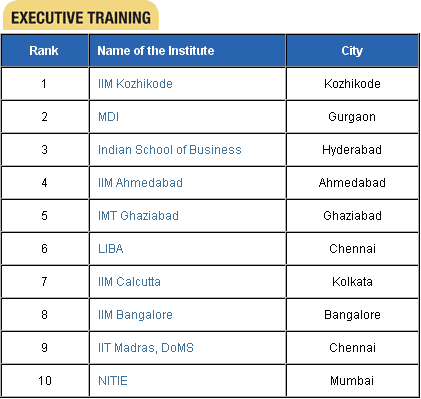
Top B-Schools based on 7 parameters
Placements, RoI & Brand Equity
The third constituent in the output parameter is the Placements, Return on Investment (ROI) & Brand Equity. Placements, is of immense interest to majority of the aspirants. The maximum average domestic salary stood at Rs 16.5 lakh per annum as reported by ISB, Hyderabad. The lowest salary figures are generally not reported barring a few like XLRI, Jamshedpur where it stood at Rs 9 lakh per annum.
The good thing this year is that there is a positive trend in the average salary levels, as reported by more than 80 percent of the institutes in the previous year. One of the most exciting ratios which every parent is interested in looking at is the ROI. Calculated as the average salary over the cost of a management programme, this ratio stands at less than 1 for nearly 50% of the institutions, needless to mention, dominated by the private players.
The best institutes in the category are mostly government institutions like FMS, Delhi University; IIT Delhi, IIT Roorkee, but not far behind are private institutes like TISS Mumbai (4), XISS Ranchi (9), KIIT School of Rural Management, Bhubaneswar (11) and Prestige Indore (14). Due to the fee hike, the IIMs now fall in the range of top 40-50 B-schools in Return on Investment ranking. The Brand Equity component primarily considered issues of goodwill, societal concern and perception of the B-school according to the response of Head/Dean of different institutions.
